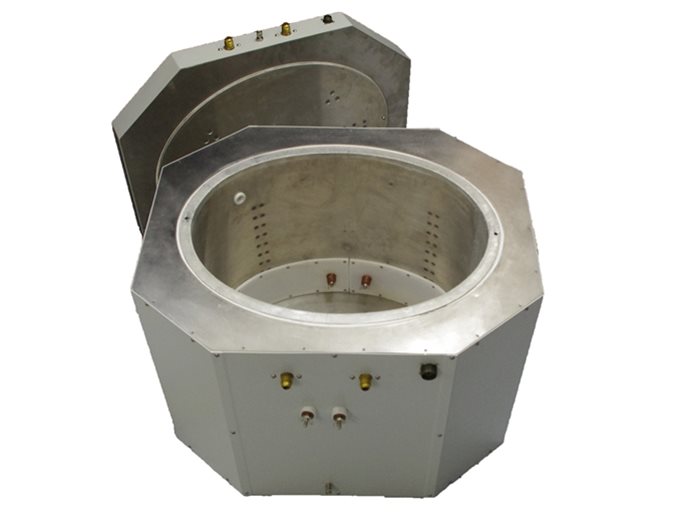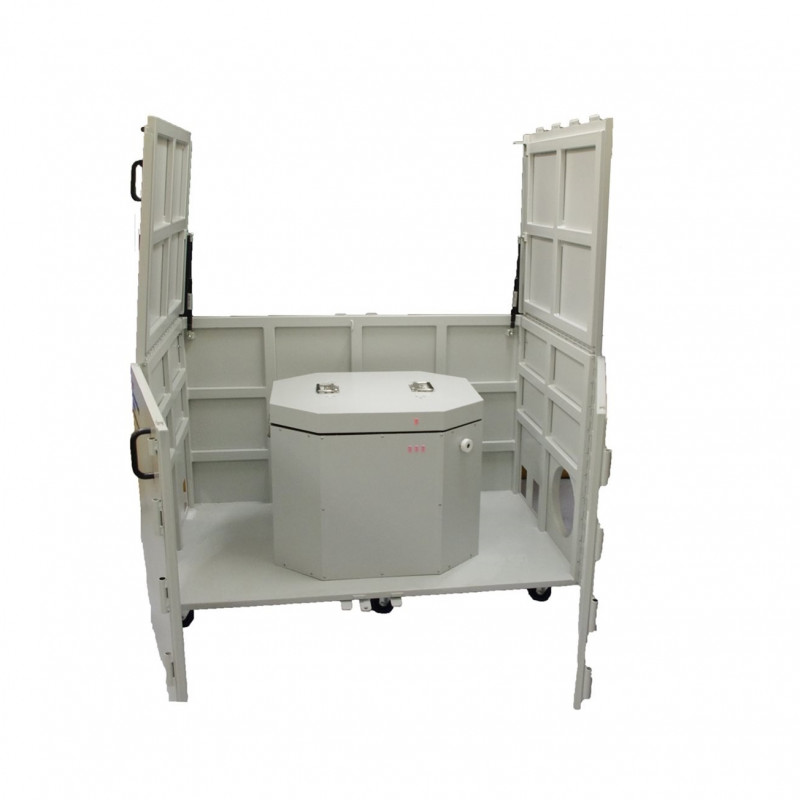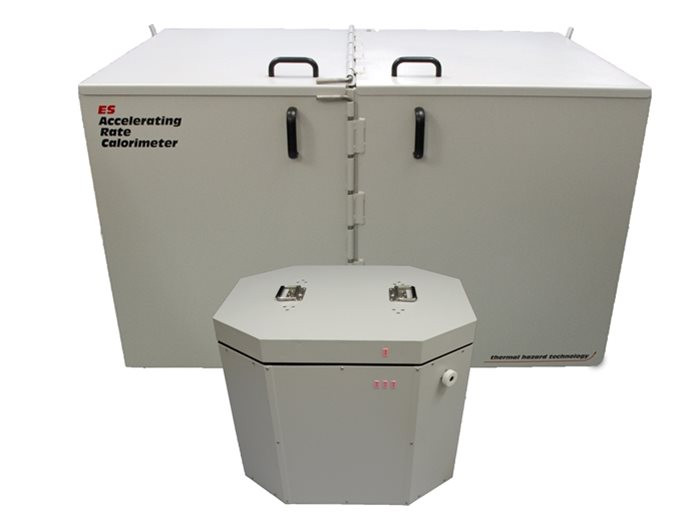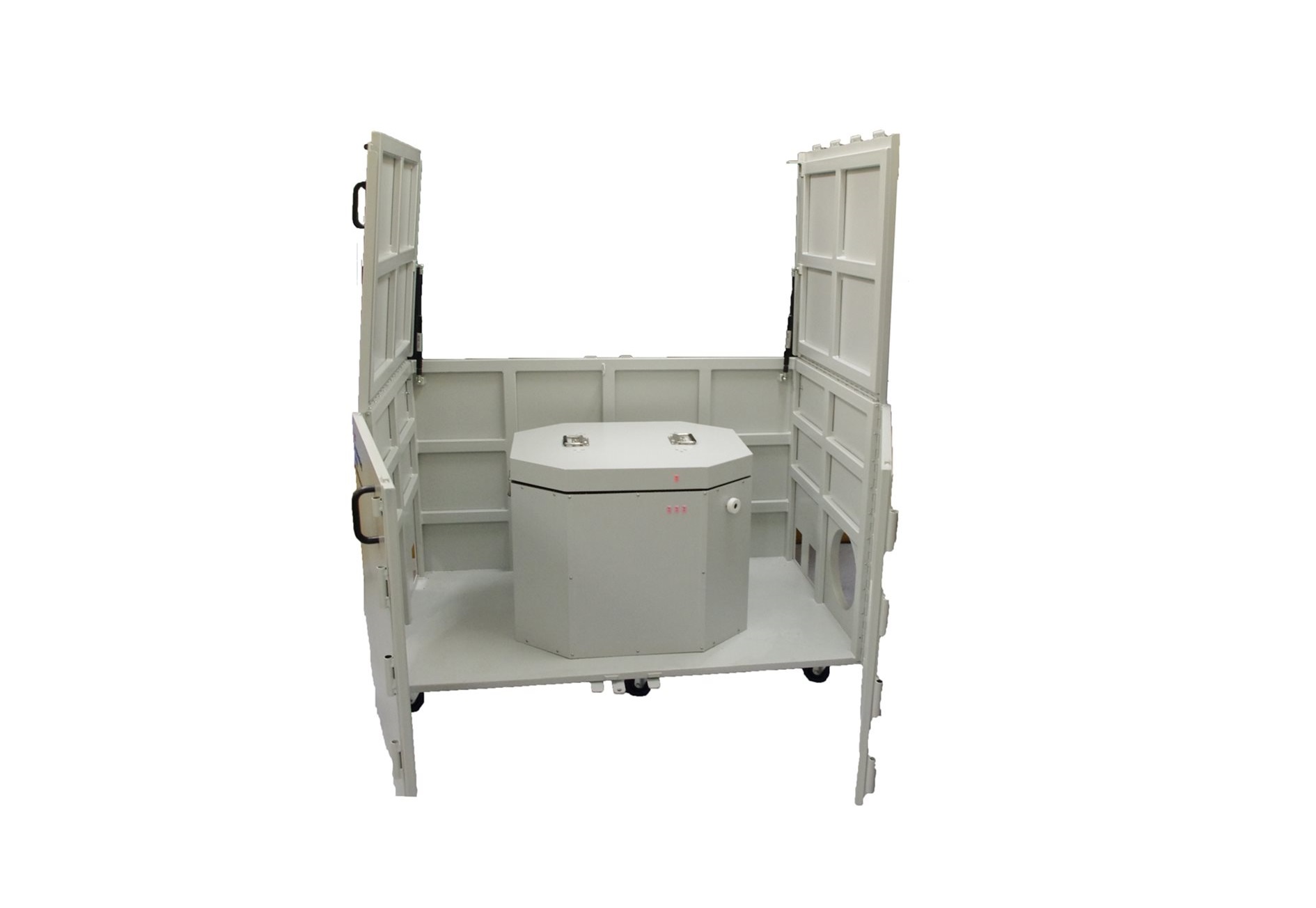
BPC는 EV와 같은 대형셀과 모듈을 연구하는 데 쓰이도록 개발되어, 충방전 시 열적 변화 특성 (특히 비열)을 정량화할 수 있습니다. BPC의 온도 limit은 200°C, 저온 -30°C의 운영이 가능합니다. 다만, battery의 안전성 (stability & safety)과 abuse 측정에는 적당하지 않습니다.
BPC는 사이클링 중 열 손실을 최소화하도록 열적 가드 사이클러 커넥터 (thermally guarded cycler connector)를 장착되어 있습니다. Calorimeter 는 깊이 50cm, cross section 단면이 타원형(oval 50~65cm)으로 대용량 배터리에 쓰이도록 설계되었습니다.
BPC는 0.005°C/min의 감도 (heat detection sensitivity)로 heat release에 대한 안정적인 특이 거동을 측정합니다. THT사의 surface area (multipoint) heat measurement option과 함께 사용되어 1 W/g 보다 훨씬 낮은 Thermal Management 적절한 정보를 얻는 데 이상적인 시스템입니다.
THT ARC 소프트웨어와 컨트롤러 (electronics)를 사용하는 BPC는 adiabatic isothermal mode 또는 isoperibolic mode로 쓰입니다. 측정 모드 선택은 연구 목표에 따릅니다. BPC의 주요 옵션으로 표면 온도 다중 포인트 측정 옵션 (surface area multipoint heat measurement option)과 비열 옵션 (heat capacity option)의 운영이 가능합니다.
Hardware Features & Performance
Calorimeter Assembly
- Oval, aluminium, 5mm wall thickness, 6mm lid and base
- 65-50cm diameter
- 50cm deep
- Heating with PID control, cooling with refrigerated circulating bath.
- Built in thermally guarded cycler connectors to minimise heat loss during cycling
- Pressure measurement capability
- Operation modes: Isothermal or Adiabatic
Temperature range: -30°C* to +120°C
Temperature measurement: Type N thermocouple
Temperature sensitivity: 0.01°C
Temperature accuracy: 0.1°C
Detection sensitivity: from 0.01°C/min
Pressure measurement: 0-10 bar
Pressure accuracy: 0.5%
Standard Features
Two stage insulated calorimeter construction
Internal cooling coil (connection to chiller)
Internal dry gas purge (preventing ice formation)
External and internal current & voltage cable connection to 2-stage calorimeter (thermal diode design).
Allows connection to THT or user supplied Battery cycler or test system
Ancillary Ports Unit
Offers ability to implement options & functionality such as pressure measuring, inertion, video, heat capacity or surface temperature distribution measurement.
Safety Features
Electronic Cut Out
Software & Hardware cut out features will automate cooling.
Customer Support
Installation & training
1 week, acceptance test
Support
Guarantee 1 year, phone and email support over lifetime of instrument without charge
Part Supply
10 years guaranteed
Manuals
Full operations and data analysis
Manuals with tutorials
Options
Options to increase the functionality of the BPC
CPU Automatic Specific Heat Measurement up to 120°C
MPO Multipoint thermocouple for spatial distribution measurement

A large volume calorimeter developed for research studies of larger (EV) cells and modules.
The BPC is designed to quantify heat changes during charge and discharge – at conditions that simulate use of the battery.
The BPC is not appropriate for stability, safety and abuse studies where battery disintegration is possible. The BPC has an upper temperature limit of 200°C but operates down to -30°C. Cryogenic operation is possible by linking to a refrigerated circulating bath.
BPC has built in thermally guarded cycler connectors to minimise heat loss during cycling. The calorimeter has a depth of 50cm but its cross section is oval (50-65cm) maximising useful volume for large batteries.
With heat detection sensitivity at 0.005°C/min the BPC has stable specific detection for heat release. In conjunction with the THT surface area (multipoint) heat measurement option, the BPC at well below 1 w/g detection, is ideally suited for gaining information appropriate for Thermal Management.
The BPC used with THT ARC software and electronics can be used within the adiabatic isothermal or isoperibolic modes. The choice of mode relates to the studies undertaken.
Key options used with the BPC are the surface area (multipoint) option and the heat capacity option. The BPC complements the other calorimeters available from THT.
